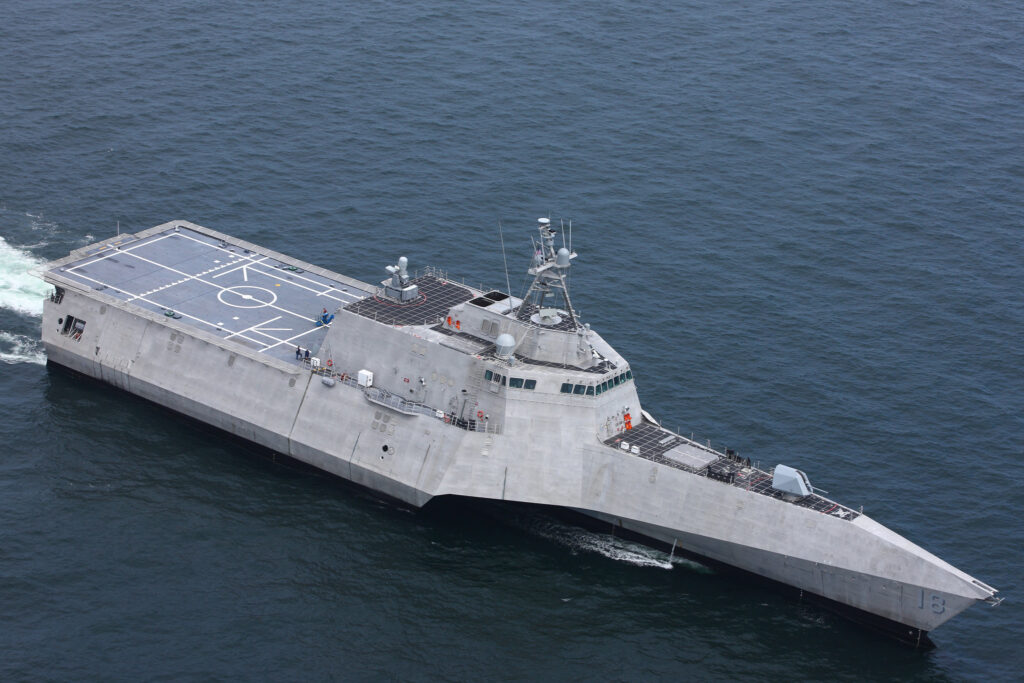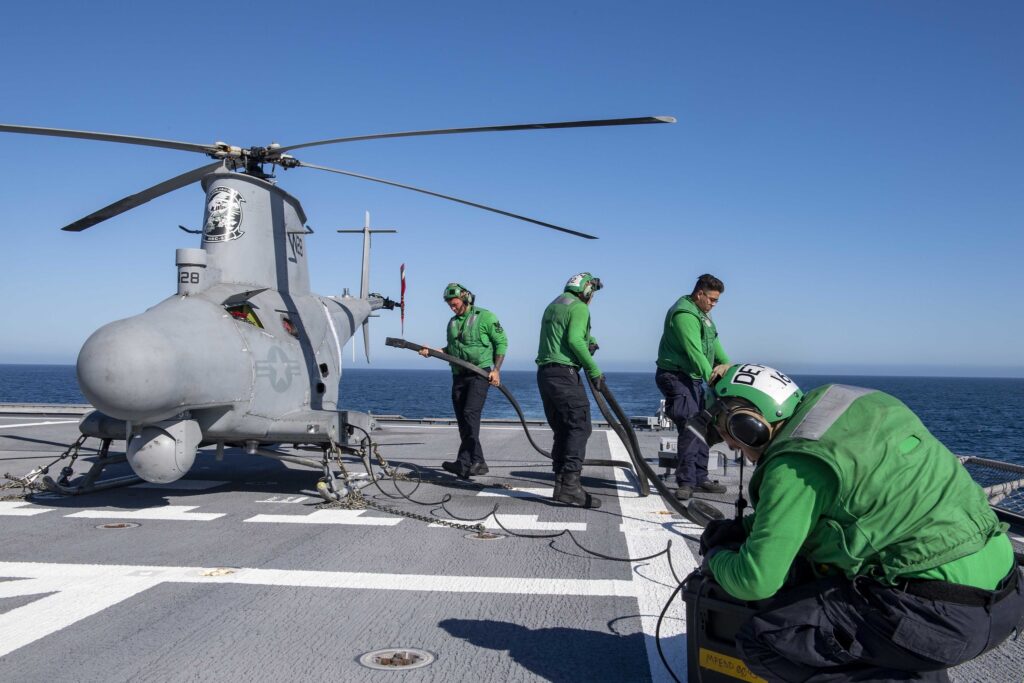
An MQ-8B Fire Scout unmanned aerial vehicle crashed into the side of USS Charleston (LCS 18) after taking off from the ship around 3:40 p.m., April 26, the US Navy announced.
No one was injured, and the Littoral Combat Ship continued to safely operate after the incident involving the MQ-8B Fire Scout vertical take-off and landing tactical unmanned aerial vehicle (VTUAV).

The Fire Scout – 31.7 feet long and nearly 10 feet tall – fell into the sea and was not recovered. The mishap damaged a safety net on the ship and struck the hull. Damage to the ship is being assessed but appears limited to an area above the waterline. Charleston continues operations in the Western Pacific.
The cause of the mishap is under investigation.

The Fire Scout was assigned to Helicopter Sea Combat Squadron (HSC) 21 based out of Naval Air Station North Island and was assigned to Charleston as part of its current mission.
MQ-8B Fire Scout
The Northrop Grumman MQ-8 Fire Scout is an unmanned autonomous helicopter developed by Northrop Grumman for use by the United States Armed Forces. The Fire Scout is designed to provide reconnaissance, situational awareness, aerial fire support and precision targeting support for ground, air and sea forces.
There are two Fire Scout variants. The smaller MQ-8B Fire Scout has deployed on multiple frigates and is currently deployed on a Littoral Combat Ship (LCS). MQ-8B Fire Scout has also deployed to Afghanistan to support counter- improvised explosive device (IED) operations. This system has completed more than 16,600 flight hours over 6,200 sorties. The US Navy has integrated a multi-mode maritime radar on MQ-8B and tested an onboard weapons capability, the Advanced Precision Kill Weapon System (APKWS). The MQ-8B Fire Scout has also demonstrated the ability to operate concurrently with other manned aircraft while operating at sea.
The MQ-8C Fire Scout is the Navy’s next-generation autonomous helicopter. The MQ-8C Fire Scout’s airframe is based on the commercial Bell 407, a mature helicopter with more than 1,600 airframes produced and over 4.4 million flight hours.
Check out Naval Library App to find out the specifications of the MQ-8B Fire Scout .




